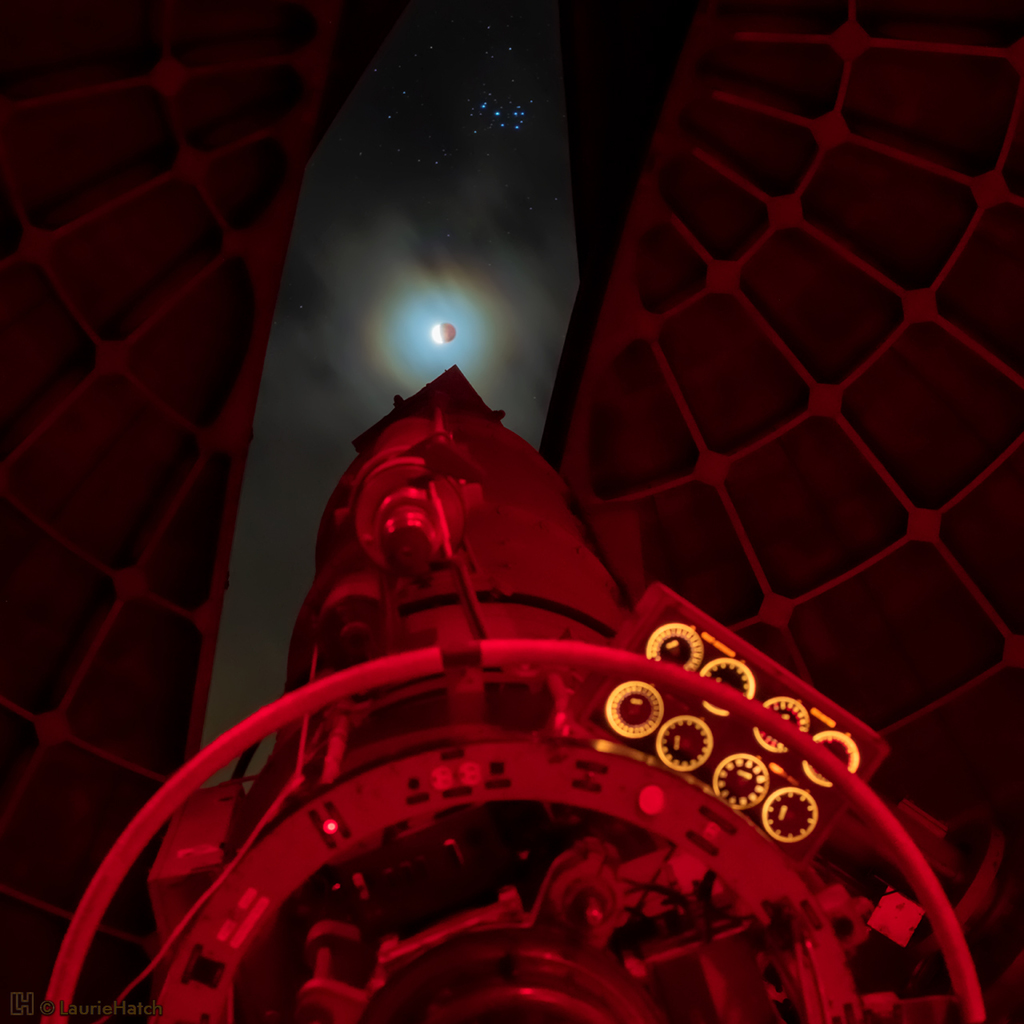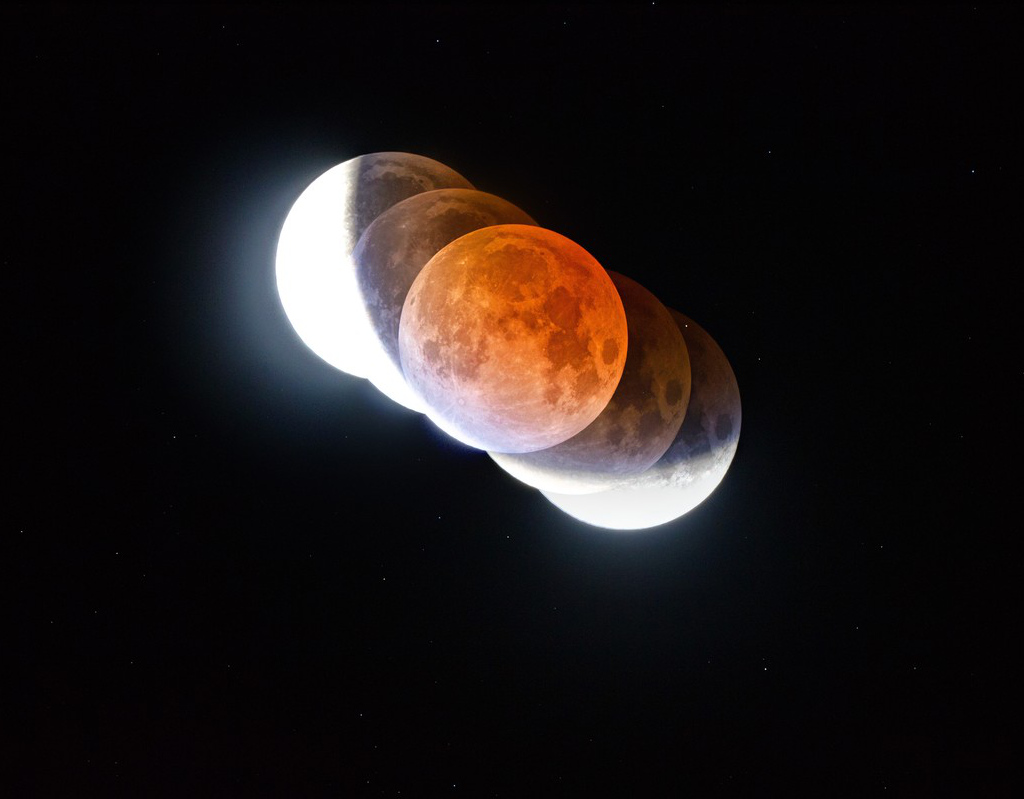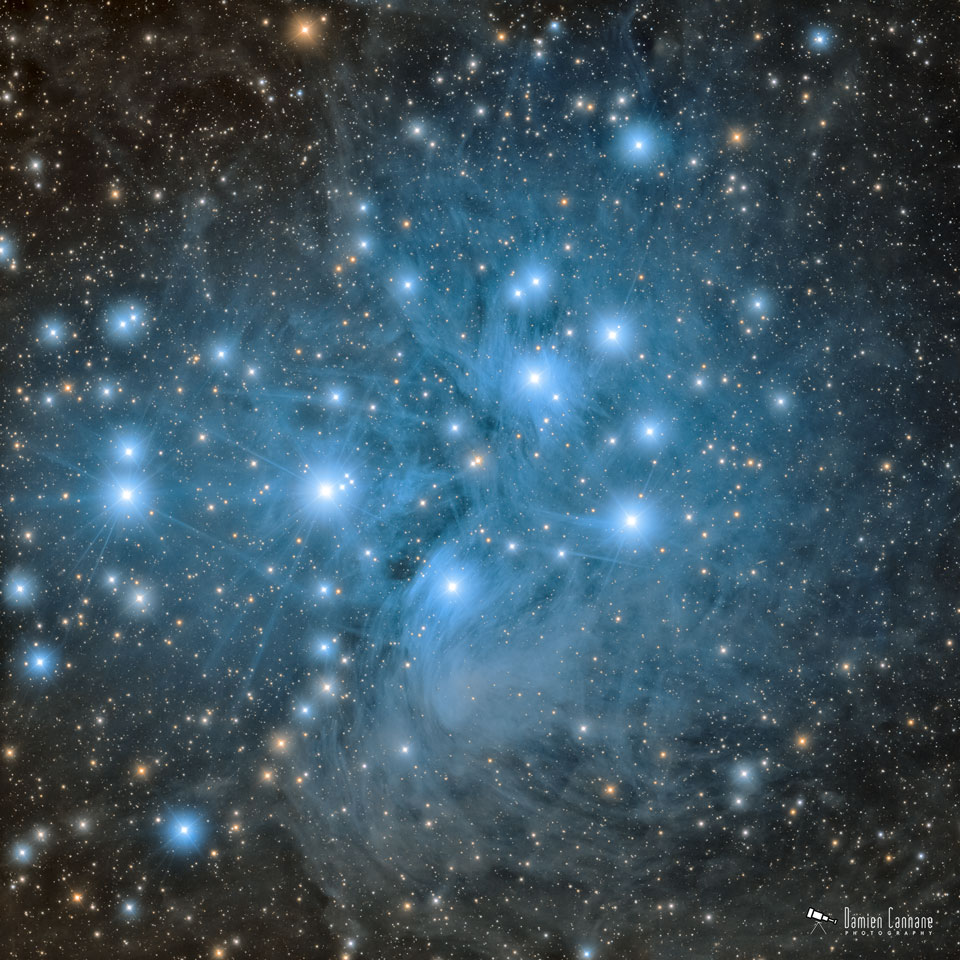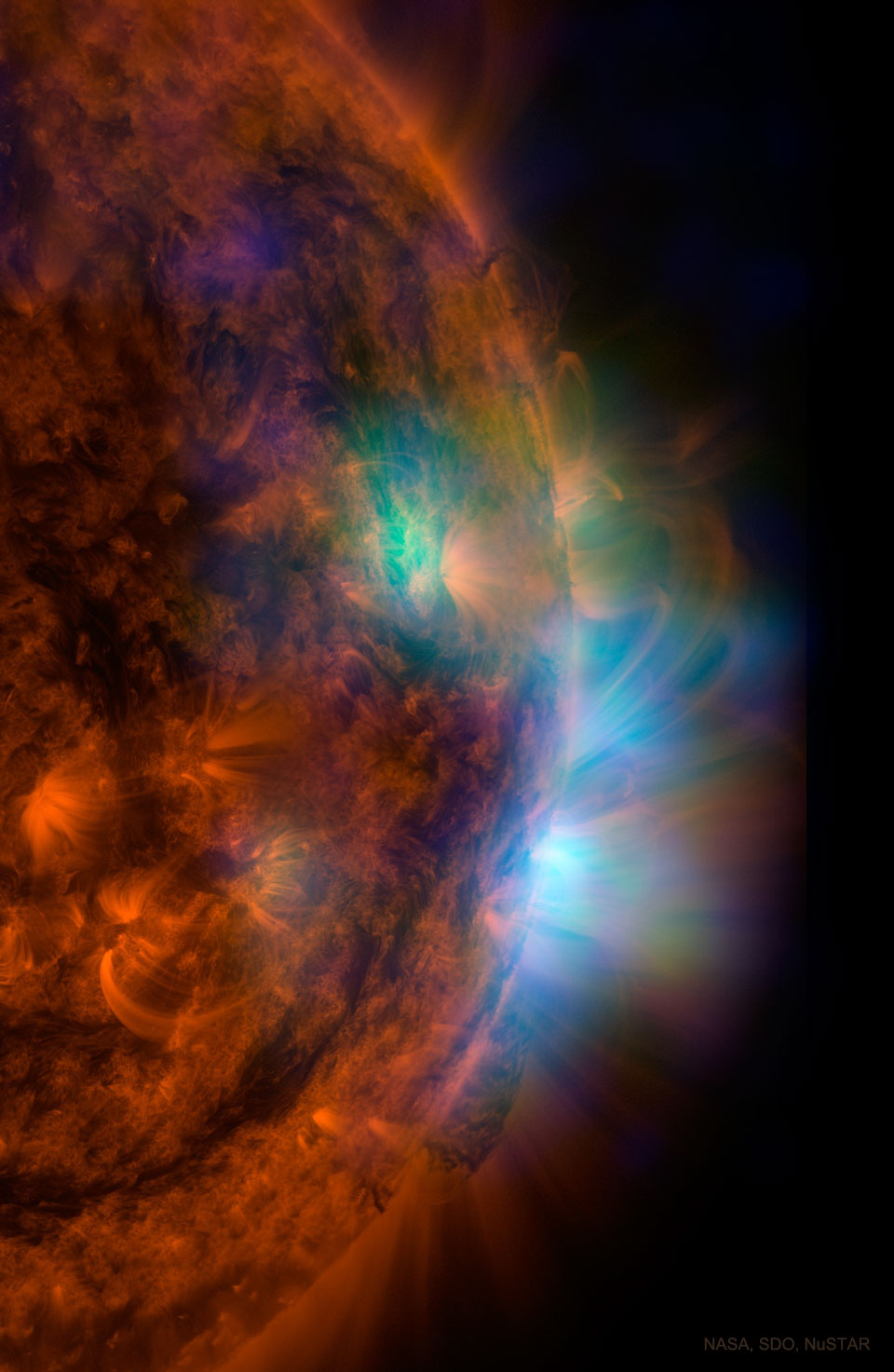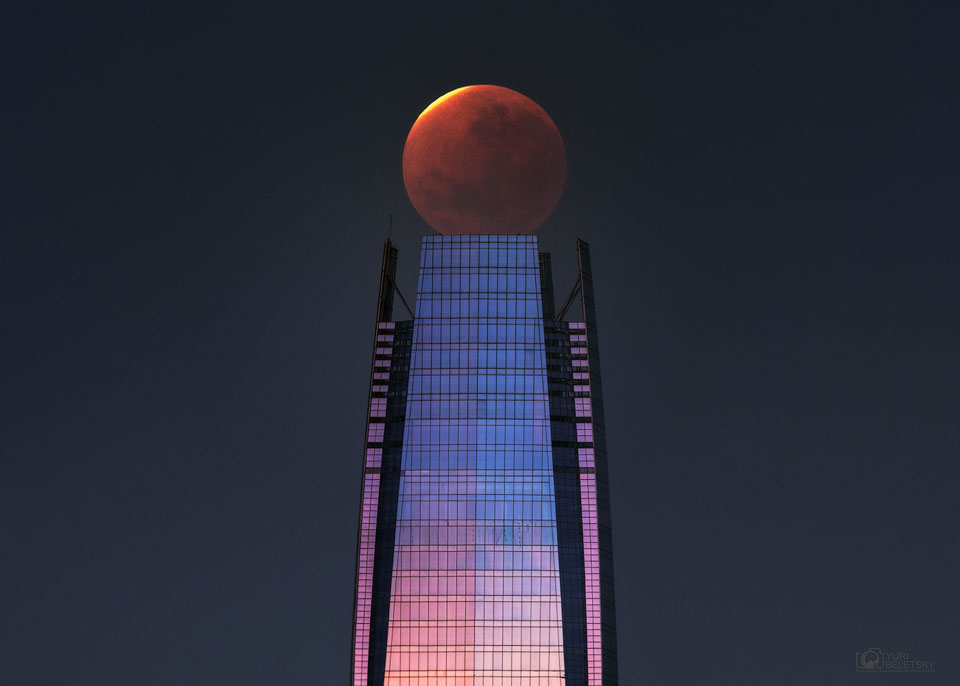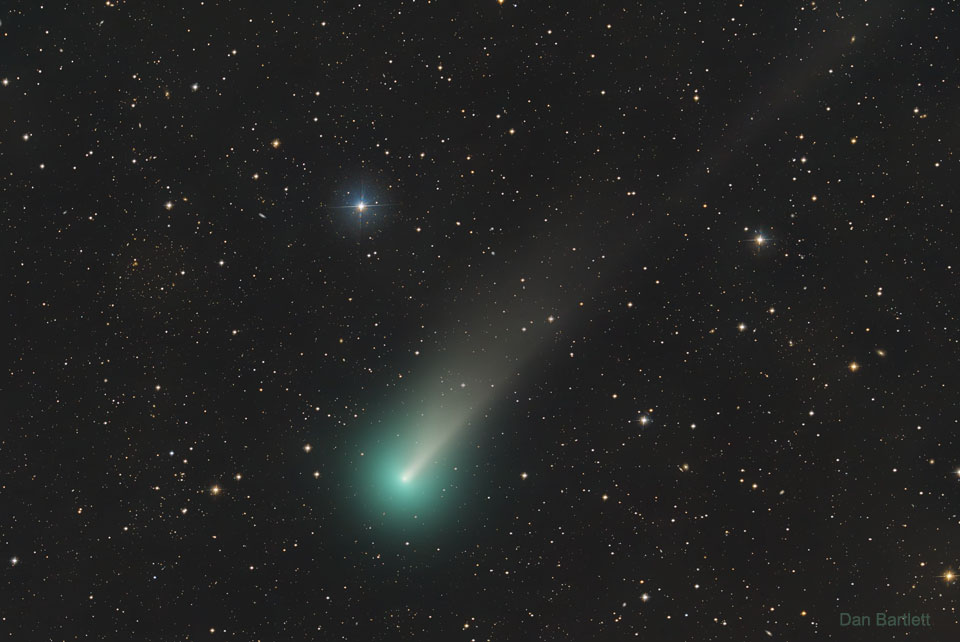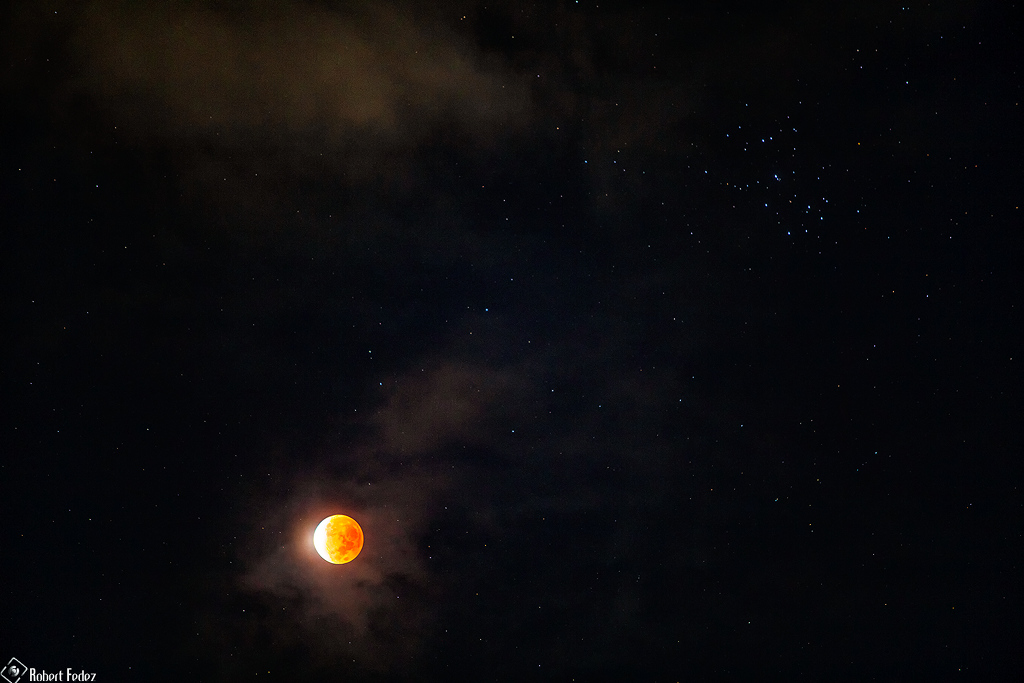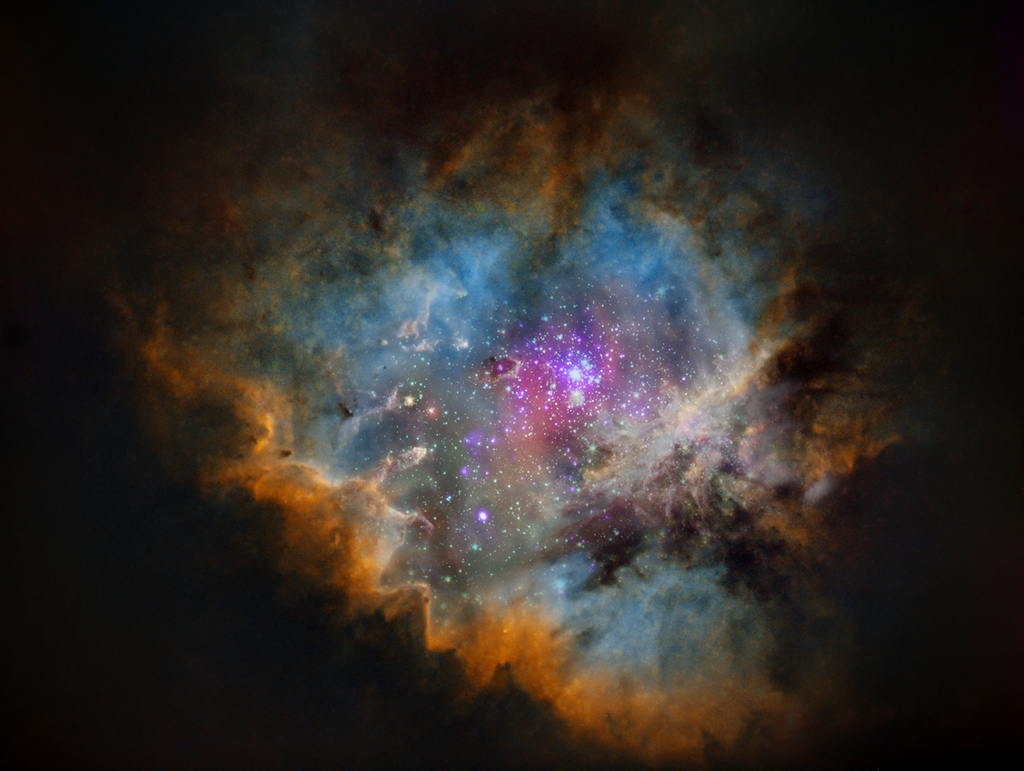Nombre total de pages vues
26/11/2021
ASTRONOMY - Great Refractor and Lunar Eclipse
2021 November 26
Image Credit & Copyright: Laurie Hatch
Explanation: Rain clouds passed and the dome of the Lick Observatory's 36 inch Great Refractor opened on November 19. The historic telescope was pointed toward a partially eclipsed Moon. Illuminated by dim red lighting to preserve an astronomer's night vision, telescope controls, coordinate dials, and the refractor's 57 foot long barrel were captured in this high dynamic range image. Visible beyond the foreshortened barrel and dome slit, growing brighter after its almost total eclipse phase, the lunar disk created a colorful halo through lingering clouds. From the open dome, the view of the clearing sky above includes the Pleiades star cluster about 5 degrees from Moon and Earth's shadow.
25/11/2021
ASTRONOMY - At the Shadow's Edge
2021 November 25
Image Credit & Copyright: Jean-Francois Gout
Explanation: Shaped like a cone tapering into space, the Earth's dark central shadow or umbra has a circular cross-section. It's wider than the Moon at the distance of the Moon's orbit though. But during the lunar eclipse of November 18/19, part of the Moon remained just outside the umbral shadow. The successive pictures in this composite of 5 images from that almost total lunar eclipse were taken over a period of about 1.5 hours. The series is aligned to trace part of the cross-section's circular arc, with the central image at maximum eclipse. It shows a bright, thin sliver of the lunar disk still beyond the shadow's curved edge. Of course, even within the shadow the Moon's surface is not completely dark, reflecting the reddish hues of filtered sunlight scattered into the shadow by Earth's atmosphere.
24/11/2021
ASTRONOMY - Pleiades: The Seven Sisters Star Cluster
2021 November 24
Image Credit & Copyright: Damien Cannane
Explanation: Have you ever seen the Pleiades star cluster? Even if you have, you probably have never seen it as large and clear as this. Perhaps the most famous star cluster on the sky, the bright stars of the Pleiades can be seen without binoculars from even the depths of a light-polluted city. With a long exposure from a dark location, though, the dust cloud surrounding the Pleiades star cluster becomes very evident. The featured exposure, taken from Florida, USA, covers a sky area several times the size of the full moon. Also known as the Seven Sisters and M45, the Pleiades lies about 400 light years away toward the constellation of the Bull (Taurus). A common legend with a modern twist is that one of the brighter stars faded since the cluster was named, leaving only six of the sister stars visible to the unaided eye. The actual number of Pleiades stars visible, however, may be more or less than seven, depending on the darkness of the surrounding sky and the clarity of the observer's eyesight.
23/11/2021
ASTRONOMY - The Sun in X-rays from NuSTAR
2021 November 23
Image Credit: NASA, NuSTAR, SDO
Explanation: Why are the regions above sunspots so hot? Sunspots themselves are a bit cooler than the surrounding solar surface because the magnetic fields that create them reduce convective heating. It is therefore unusual that regions overhead -- even much higher up in the Sun's corona -- can be hundreds of times hotter. To help find the cause, NASA directed the Earth-orbiting Nuclear Spectroscopic Telescope Array (NuSTAR) satellite to point its very sensitive X-ray telescope at the Sun. Featured here is the Sun in ultraviolet light, shown in a red hue as taken by the orbiting Solar Dynamics Observatory (SDO). Superimposed in false-colored green and blue is emission above sunspots detected by NuSTAR in different bands of high-energy X-rays, highlighting regions of extremely high temperature. Clues about the Sun's atmospheric heating mechanisms come from NuSTAR images like this and shed light on solar nanoflares and microflares as brief bursts of energy that may drive the unusual heating.
22/11/2021
ASTRONOMY - Lunar Eclipse over a Skyscraper
2021 November 22
Image Credit & Copyright: Yuri Beletsky (Carnegie Las Campanas Observatory, TWAN)
Explanation: Why is the Moon on top of this building? Planning. It took the astrophotographer careful planning -- including figuring out exactly where to place the camera and exactly when to take the shot -- to create this striking superposition. The single image featured was taken in the early morning hours of November 19, near the peak of the partial lunar eclipse that was occurring as the Moon passed through the Earth's shadow. At this time, almost the entire Moon -- 99.1 percent of its area -- was in the darkest part of the Earth's shadow. The building is the Gran Torre Santiago building in Chile, the tallest building in South America. Although the entire eclipse lasted an impressive six hours, this image had to be taken within just a few seconds to get the alignment right -- the Earth's rotation soon moved the building out of alignment. The next Earth-Moon eclipse will be a total eclipse of the Sun that will occur on December 4 -- but only be visible from the bottom of our world.
CATASTROPHES MARITIMES - Titanic foi filmado pela primeira vez em 4K, veja como ele está hoje
engenhariahoje
21/11/2021
ASTRONOMY - Introducing Comet Leonard
2021 November 21
Image Credit & Copyright: Dan Bartlett
Explanation: Here comes Comet Leonard. Comet C/2021 A1 (Leonard) was discovered as a faint smudge in January 2021 when it was out past Mars -- but its orbit will take the giant shedding ice-ball into the inner Solar System, passing near both Earth and Venus in December before it swoops around the Sun in early January 2022. Although comets are notoriously hard to predict, some estimations have Comet Leonard brightening to become visible to the unaided eye in December. Comet Leonard was captured just over a week ago already sporting a green-tinged coma and an extended dust tail. The featured picture was composed from 62 images taken through a moderate-sized telescope -- one set of exposures tracking the comet, while another set tracking the background stars. The exposures were taken from the dark skies above the Eastern Sierras (Mountains), near June Lake in California, USA. Soon after passing near the Earth in mid-December, the comet will shift from northern to southern skies.
20/11/2021
ASTRONOMY - An Almost Total Lunar Eclipse
2021 November 20
Image Credit & Copyright: Robert Fedez
Explanation: Predawn hours of November 19 found the Moon in partly cloudy skies over Cancun, Mexico. Captured in this telephoto snapshot, the lunar disk is not quite entirely immersed in Earth's dark umbral shadow during a long partial lunar eclipse. The partial eclipse was deep though, deep enough to show the dimmed but reddened light in Earth's shadow. That's a sight often anticipated by fans of total lunar eclipses. Wandering through the constellation Taurus, the eclipsed Moon's dimmer light also made it easier to spot the Pleiades star cluster. The stars of the Seven Sisters share this frame at the upper right, with the almost totally eclipsed Moon.
19/11/2021
ASTRONOMY - NGC 281: Starless with Stars
2021 November 19
Image Credit & Copyright: Wido Oerlemans - X-ray: Chandra, Infrared: Spitzer
Explanation: In visible light the stars have been removed from this narrow-band image of NGC 281, a star forming region some 10,000 light-years away toward the constellation Cassiopeia. Stars were digitally added back to the resulting starless image though. But instead of using visible light image data, the stars were added with X-ray data (in purple) from the Chandra X-ray Observatory and infrared data (in red) from the Spitzer Space Telescope. The merged multiwavelength view reveals a multitude of stars in the region's embedded star cluster IC 1590. The young stars are normally hidden in visible light images by the natal cloud's gas and obscuring dust. Also known to backyard astro-imagers as the Pacman Nebula for its overall appearance in visible light, NGC 281 is about 80 light-years across.
ASTRONOMY - Messier 6
2025 July 19 Messier 6 Image Credit & Copyright : Xinran Li Explanation: The sixth object in Charles Messier's famous catalog ...

-
2022 September 26 All the Water on Planet Earth Illustration Credit: Jack Cook, Adam Nieman, Woods Hole Oceanographic Institution ; Data ...
-
2024 September 7 Small Moon Deimos Image Credit: HiRISE , MRO , LPL (U. Arizona) , NASA Explanation: Mars has two tiny moons, Phobos a...
